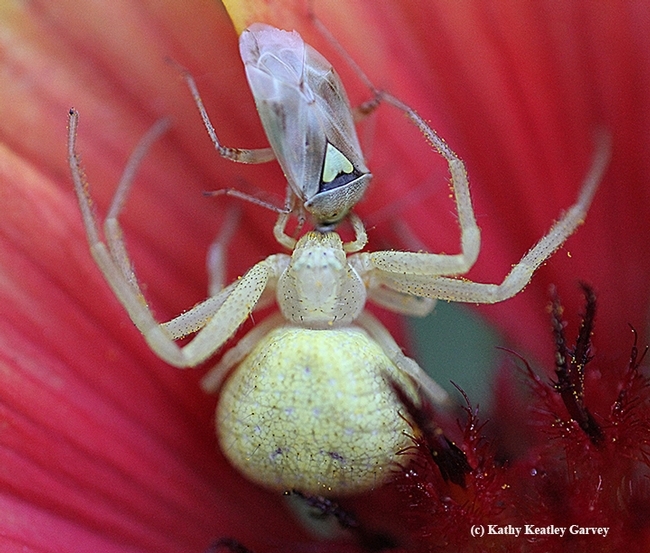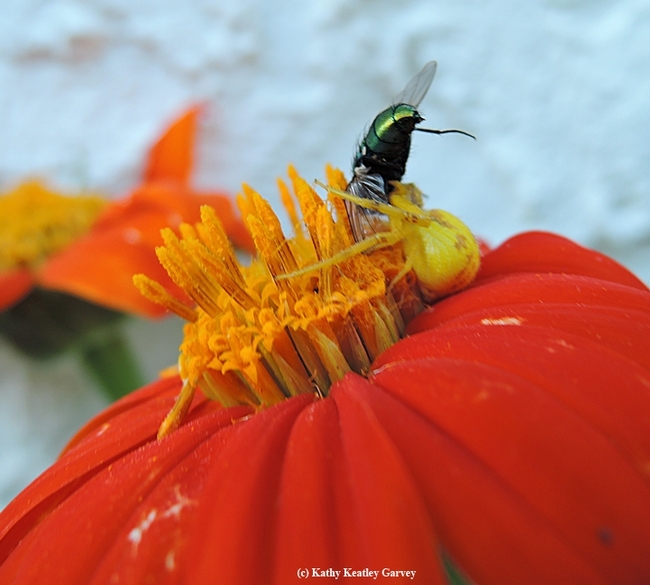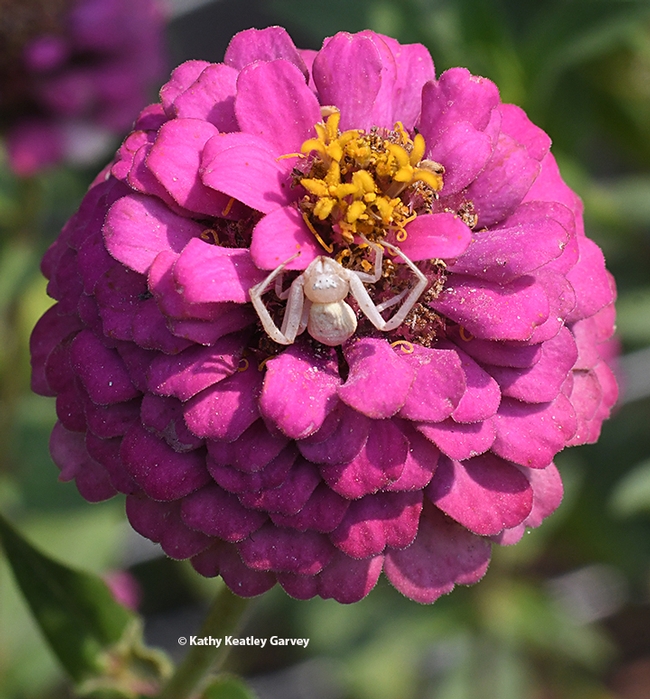- Author: Kathy Keatley Garvey

They share a name, for one thing.
When evolutonary biologist-taxonomist Chris Hamilton, a former doctoral student at Auburn University, Alabama, and now on the University of Idaho faculty, led a research team near the site of California's Folsom State Prison to look for tarantulas, he discovered a new species, solid black in color.
He named it Aphonopelma johnnycashi after Johnny Cash, the legendary country singer known as "The Man in Black."
Fast forward to this week:
Hamilton, now assistant professor in the Department of Entomology, Plant Pathology and Nematology, will speak on tarantula diversity when he presents a virtual seminar at 4:10 p.m., Wednesday, April 21 to the UC Davis Department of Entomology and Nematology. His title: "Understanding Aphonopelma Diversity across the Madrean Pine-Oak Woodlands Hotspot by Integrating Western Science and Traditional Ecological Knowledge (TEK)." Click on this link to access the seminar.
Hosting the seminar is Jason Bond, the Evert and MarionSchlinger Endowed Chair in Insect Systematics, UC Davis Department of Entomology and Nematology, and Hamilton's major professor at Auburn University. Hamilton received his doctorate in evolutionary biology from Auburn University in 2015, after earning his master's degree in biology in 2009 from the University of Texas at Arlington.
"Dr. Hamilton does great work on terrestrial arthropods with an emphasis on mygalomorph spiders (trapdoor spiders, tarantulas and their kin)," Bond commented.
Hamilton's abstract: "Within the world of theraphosid systematics, the genus Aphonopelma has received considerable attention in recent years. But despite these efforts, the group's diversity remains poorly understood in the Madrean Pine-Oak Woodlands Hotspot located in the southwestern United States and northern Mexico--an ecoregion known for its exceptional biodiversity and endemicity. It has long been thought that Aphonopelma was a 'taxonomic and nomenclatural nightmare' because across their distributions, similarly sized species are often frustratingly similar morphologically. This is all too obvious when examining populations in the Madrean Sky Islands and Sierra Madre Occidental, as their shared evolutionary history and divergence in similar isolated habitats has produced very similar phenotypes. This work looks to employ an integrative approach for delimiting species that incorporates information from morphology (traditional and advanced techniques) and molecules (phylogenomics), as well as data on ecology (niche, distribution, and behavior) and how Traditional Ecological Knowledge (TEK) of the Apache and Tohono O'odham peoples may help piece the puzzle together. As we continue to investigate some of the more remote and hard-to-access mountain ranges, we have discovered that most independent ranges harbor their own divergent and distinct lineages that may represent new species."
Hamilton received his doctorate in entomology from Auburn University; his master's degree from the University of Texas at Arlington; and his bachelor's degree from Western Kentucky University.
Hamilton's naming of the new tarantula species drew widespread interest. Lindsay Miles of Auburn University's Office of Communications and Marketing wrote a 2016 news release: "The species, Aphonopelma johnnycashi, was found in California near the site of Folsom State Prison, which Cash made famous in his song Folsom Prison Blues. The mature male Aphonopelma johnnycashi measures up to 6 inches across and is generally solid black in color, much like Cash's distinctive style of dress from which his nickname, 'The Man in Black,' was coined."
"Along with the Aphonopelma johnnycashi, Hamilton's study determined there are only 29 species of tarantula in the United States, 14 of which are new to science. Researchers had previously identified 55 species. The new descriptions nearly double the number of species known from the American Southwest, a region described as a biodiversity hotspot featuring frigid mountains and scorching deserts."
The team, Miles wrote, "spent more than a decade searching for tarantulas throughout the American Southwest and studied almost 3,000 specimens, undertaking the most comprehensive taxonomic study ever preformed on a group of tarantulas." The study was part of Hamilton's dissertation, which was funded by two National Science Foundation grants made to Auburn University.
In the news story, Bond, then chair of the Department of Biological Sciences, praised Hamilton as "an accomplished field biologist and taxonomist (who) is also doing cutting-edge genomics research."
Miles pointed out that "Although this is the first time Johnny Cash has been honored by an Auburn researcher, Auburn University professors have garnered national attention in the past for naming celebrities, characters and even President Obama, with a species name. Bond has named species of trapdoor spiders after U2's Bono, actress Angelina Jolie and talk show host Stephen Colbert, to name a few. Jonathan Armbruster, also of the Department of Biological Sciences, made headlines last year when he named a newly discovered catfish species after the Star Wars fan favorite, Greedo."
Cooperative Extension specialist Ian Grettenberger is coordinating the spring seminars and may be reached at imgrettenberger@ucdavis.edu for any technical questions.
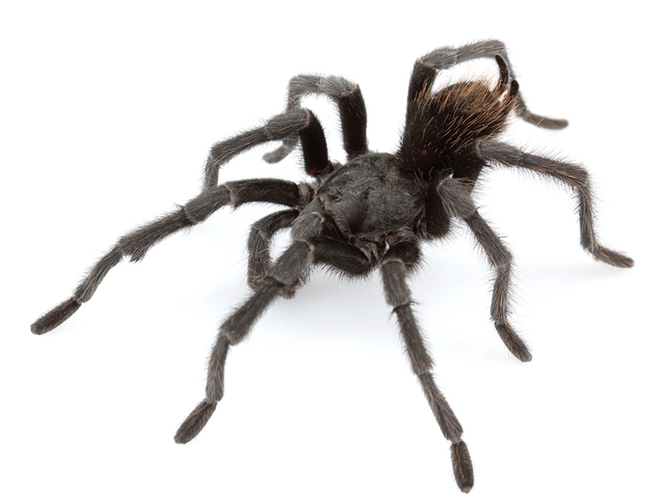
- Author: Kathy Keatley Garvey
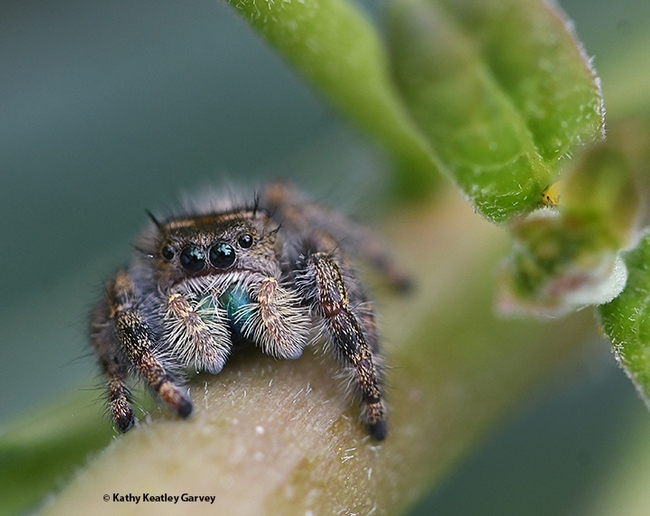
If you engage in social media, you've probably seen a "what-is-this" query about a spider that some unsuspecting person discovered quite unexpectedly in a garden, bedroom, bathroom or garage. Triple exclamation points usually accompany "Yecch!!!" (Expletives usually require quadruple exclamation points.)
For a good general view of spiders, check out the UC Statewide Integrated Pest Management Program's newly revised "Spiders" Pest Note.
"Many people fear or dislike spiders," according to the site, but "for the most part, spiders are beneficial because of their role as predators of insects and other arthropods, and most cannot harm people. Spiders that might injure people—for example, black widows—generally spend most of their time hidden outside homes in woodpiles or in clutter in the garage. The spiders commonly seen out in the open during the day are unlikely to bite people."
Spiders, which are arachnids, differ from insects in that they have eight legs (not six) and have no wings or antennae.
UC IPM offers information on black widow spiders, yellow sac spiders and recluse spiders (which, contrary to popular opinion, are NOT found in California). The website also touches on jumping spiders, hobo spiders, common house spiders, and tarantulas. A table, illustrated with photos, lists the common spider families in North America, including:
- Agelenidae, funnel weavers or grass spiders
- Araneidae, orb weavers or garden spiders
- Clubionidae (including Corinnidae), sac spiders or twoclawed hunting spiders
- Linyphiidae (=Microphantidae), dwarf spiders
- Lycosidae, wolf spiders
- Oxyopidae, lynx spiders
- Salticidae, jumping spiders
- Theridiidae, cobweb, cobweb weaver, or combfooted spiders
- Thomisidae, crab spiders or flower spiders
What about spider bites? "Unlike mosquitoes, spiders do not seek people in order to bite them," UC IPM says, tongue in cheek. "Generally, a spider doesn't try to bite a person unless it has been squeezed, lain on, or similarly provoked to defend itself. Moreover, the jaws of most spiders are so small that the fangs cannot penetrate the skin of an adult person. Sometimes when a spider is disturbed in its web, it may bite instinctively because it mistakenly senses that an insect has been caught."
If you've got a hankering to see a live tarantula (who doesn't?), you can do so when the Bohart Museum of Entomology at UC Davis opens its doors again to the public. The Bohart Museum, home of nearly eight million insect specimens, a gift shop (now online), and a live "petting zoo" (think Madagascar hissing cockroaches, walking sticks and taranatulas) is located in Room 1124 of the Academic Surge Building on Crocker Lane. UC Davis spider expert Professor Jason Bond and his lab usually present a program there at least once a year or engage with folks at the open houses. Bond serves as the Evert and Marion Schlinger Endowed Chair in Insect Systematics, UC Davis Department of Entomology and Nematology. (See his lab website)
As an aside, Professor Bond "bonds" with spiders. Yes, he does. And he's never met a spider he didn't like.
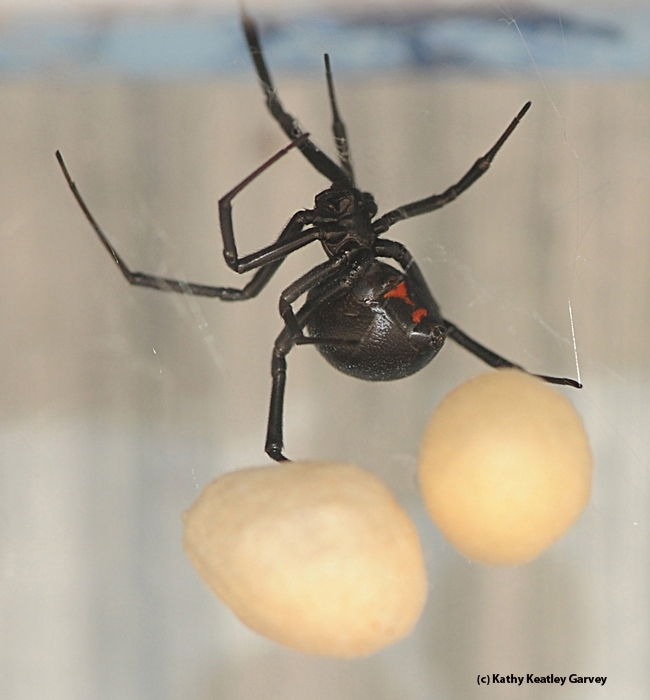
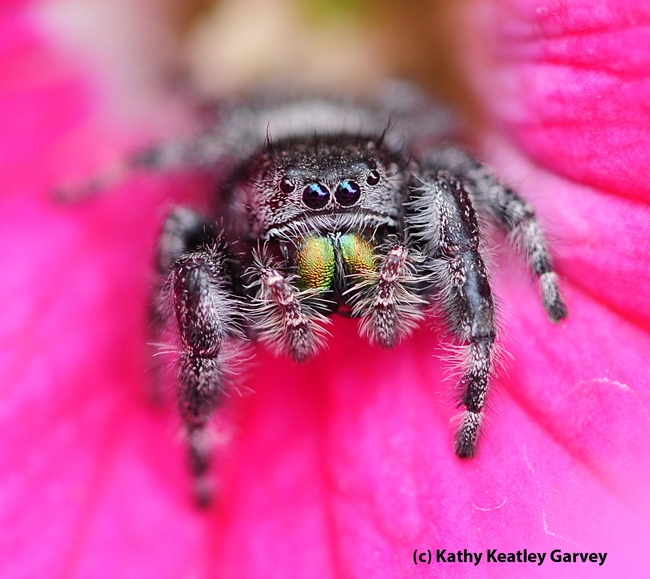
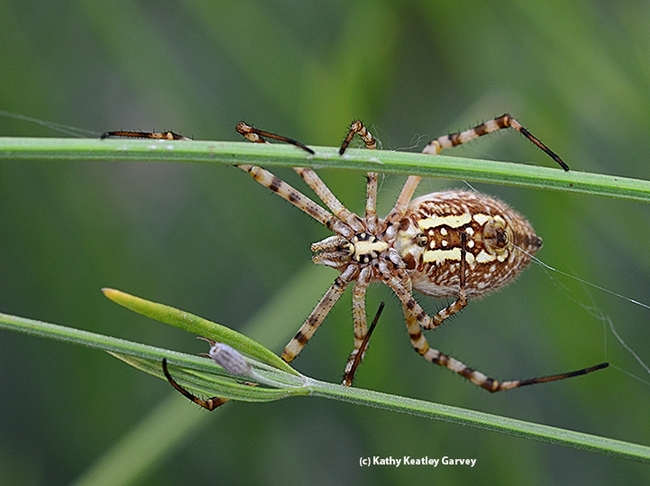
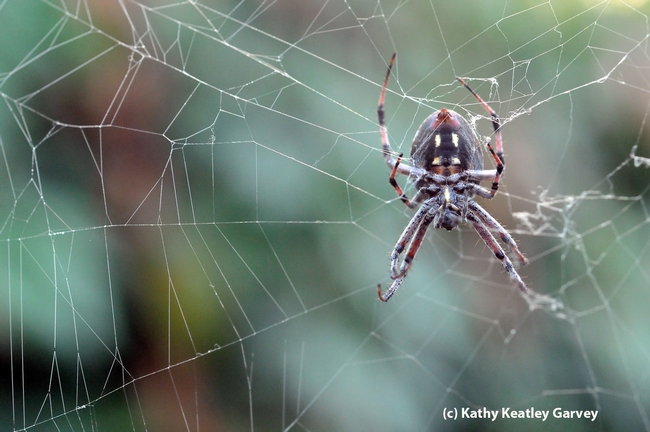
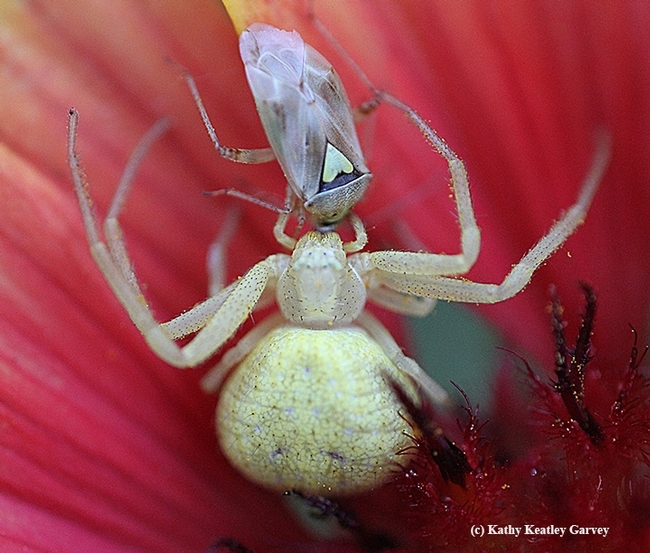
- Author: Kathy Keatley Garvey

The long-awaited scientific article on the new trapdoor genus (and species) that UC Davis Professor Jason Bond discovered on a sandy beach at Moss Landing State Park, Monterey County, is now online.
In fact, it's the cover story in the journal Insect Systematics and Diversity. Bond's image of the spider graces the cover.
And it's apparently the first spider research paper published in the journal.
The title: "Phylogeny, Evolution, and Biogeography of the North American Trapdoor Spider Family Euctenizidae (Araneae: Mygalomorphae) and the Discovery of a New ‘Endangered Living Fossil' Along California's Central Coast."
Bond, the Evert and Marion Schlinger Endowed Chair in Insect Systematics, UC Davis Department of Entomology and Nematology, discovered the female spider in 1997, and figured at the time it might be a new genus. But despite repeated trips to the site, he could not find a male for 22 years. The male proved elusive until pitfall trap sampling in the fall of 2019.
It is rare to find a genus in the field, the professor said. The usual place is in museum collection.
Name That Species
Bond named the genus Cryptocteniza and then launched a "Name-That-Spider" contest that drew some 200 entries from all over the world. Entomologist Kirsten Pearsons, a UC Davis alumnus who holds a doctorate in entomology from Pennsylvania State University, submitted the winning species name, “kawtak,” the Mutsun tribe name for "seashore." The Native American tribe settled in that area.
The journal article details the spider's phylogeny, evolution,biogeography and discovery. Co-authors are Chris Hamilton, assistant professor in the Department of Entomology, Plant Pathology and Nematology, University of Idaho, Mosco of the University of Idaho, Moscow; two Bond lab members, doctoral student Rebecca Godwin and project scientist James Starrett; and Joel Ledford, an assistant professor of teaching in the Department of Plant Biology, College of Biological Sciences.
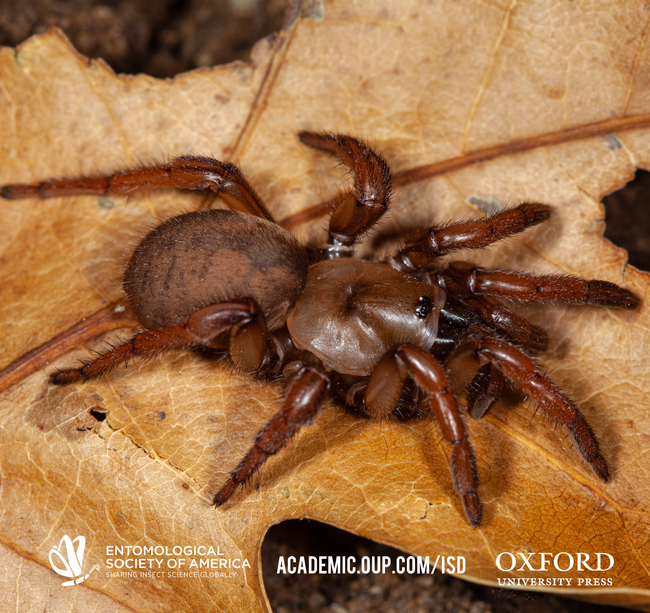
Trapdoor spiders are so named because they construct their burrows with a corklike or wafer trap door made of soil, vegetation and silk.
Of the genus name, Cryptocteniza, Bond says that the adjective “hidden or secret” is prefixed to Cteniza, the Greek feminine noun “comb.” The latter refers to the comb-like rastellum (row of stiff spines on the chelicera) common in taxa and formerly assigned to the spider family Ctenizidae (e.g., Eucteniza). The prefix refers to both the diminutive form of the rastellum and the seemingly “hidden in plain sight” nature of the genus, he says. Bond credited Vera Opatova, a postdoctoral fellow in his lab, with helping to formulate the genus name.
Good Day Sacramento Segment
The newly discovered spider has not only drawn widespread interest in the scientific world, but in the news media. A Sacramento television program, Good Day Sacramento, today featured the UC Davis professor, the spider, and the naming contest in an informative and entertaining segment. Host Cody Stark suggested that the next spider ought to be named "Cody" and spelled it out: "C-O-D-Y."
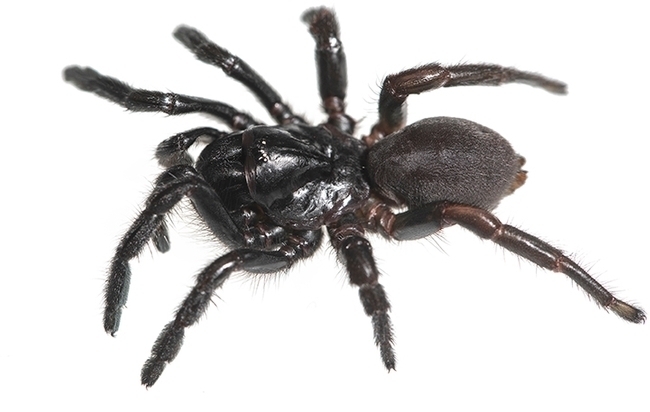

- Author: Kathy Keatley Garvey

The contest, beginning in mid-May and ending June 1, drew more than 200 suggestions from all over the world.
Entomologist Kirsten Pearsons, an alumnus of UC Davis who received her doctorate in entomology in August from Pennsylvania State University, submitted the winning name, “kawtak.”
So it's official: the trapdoor spider--or what Bond calls “the new endangered living fossil found on a sandy beach on a seashore along California's central coast"--is Cryptocteniza kawtak.
“The derivation of the specific epithet is Native American – from the Mutsun word for seashore,” said Bond, a noted spider authority and the Evert and Marion Schlinger Endowed Chair in Insect Systematics, UC Davis Department of Entomology and Nematology. The Mutsun Indians lived near Mission San Juan Bautista.
In a forthcoming scientific journal article on the spider's phylogeny, evolution, biogeography and discovery, Pearsons will be credited with naming the species.
“There were a lot of names proposed,” Bond said. “They fell into a few general categories: 1) named after me – people apparently like my last name and the association with the James Bond character but naming a spider after one's self would not be good form; 2) Native Americans, particularly California indigenous groups; 3) location (Moss Landing) and/or physical description; and 4) names related to the recent Black Lives Matter protests and movement and George Floyd.”

“I have also named other California spiders in the past for Native American groups and feel strongly that such new species names are an elegant connection California, to the land and its native people, “ Bond said.
The UC Davis professor said the Cryptocteniza kawtak is “morphologically distinct and geographically isolated from other related genera, with its closest phylogenetic relatives found much further to the east in New Mexico and Arizona.”
Trapdoor spiders are so named because they construct their burrows with a corklike or wafer trap door made of soil, vegetation and silk.
Bond discovered the female spider in 1997, and figured at the time it might be a new genus. But despite repeated trips to the site, he could not find a male for 22 years. The male proved elusive until pitfall trap sampling in the fall of 2019.
It is rare to find a genus in the field, the professor said. The usual place is in museum collections.
Bond believes the genus is found only in that area, but thinks it may be closely related to a genus found in New Mexico and Arizona. “It is quite plausible that this genus was once likely far more widespread across California and the American Southwest, with potentially greater past species diversity throughout its larger hypothetical ancestral range,” he said
In their journal article, the five-member team reconstructed the spider's evolutionary history: its extinction following the Miocene epoch, 23.03 to 5.3 million years ago and the establishment of a Mediterranean climate. “Owing to its phylogenetic distinctiveness, incredibly narrow distribution and age, we show that Cryptocteniza meets all the criteria of an ‘Endangered Living Fossil' and is consequently of grave conservation concern,” Bond said.
The other three co-authors are Bond lab members, doctoral student Rebecca Godwin and project scientist James Starrett; and Joel Ledford, an assistant professor of teaching in the Department of Plant Biology, College of Biological Sciences. Ledford interview Bond on May 18 for his Tree of Life-UC Davis YouTube channel. (Watch it online.)
The group opted for no public vote on the spider name, as it might result in something similar to “Boaty McBoatface,” the winner of a contest to name a British polar research vessel.
Of the genus name, Cryptocteniza, Bond says that the adjective “hidden or secret” is prefixed to Cteniza, the Greek feminine noun “comb.” The latter refers to the comb-like rastellum (row of stiff spines on the chelicera) common in taxa and formerly assigned to the spider family Ctenizidae (e.g., Eucteniza). The prefix refers to both the diminutive form of the rastellum and the seemingly “hidden in plain sight” nature of the genus, he says.
Bond credited Vera Opatova, a postdoctoral fellow in his lab, with helping to formulate the genus name.
Pearsons said that when she proposed the name, this is what she wrote: "Kawtak means "on the seashore" in the Mutsun language. Before the Spanish arrived, the moss landing area was home to the Mutsun people (http://amahmutsun.org). Today, tribal members and linguists are working to revitalize the Mutsun language, so this could be a small way to recognize this effort and to recognize their ties to the Monterey Bay. Also, it just sounds nice following the genus name!"
For her doctorate, Pearsons (she studied with major professor John Tooker at Penn State), explored how pest management affects arthropod decomposers and decomposition in field crops. She received her bachelor of science degree in environmental toxicology in 2015 from UC Davis.
At UC Davis, Pearsons served as a peer advisor in the Department of Environmental Technology for nearly two years. She also worked in the summer of 2014 as a student intern in the UC Davis Department of Entomology and Nematology's bee garden, the Häagen-Dazs Honey Bee Haven on Bee Biology Road.
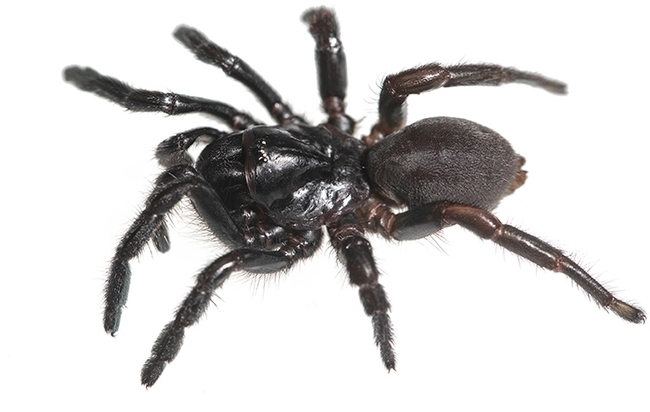
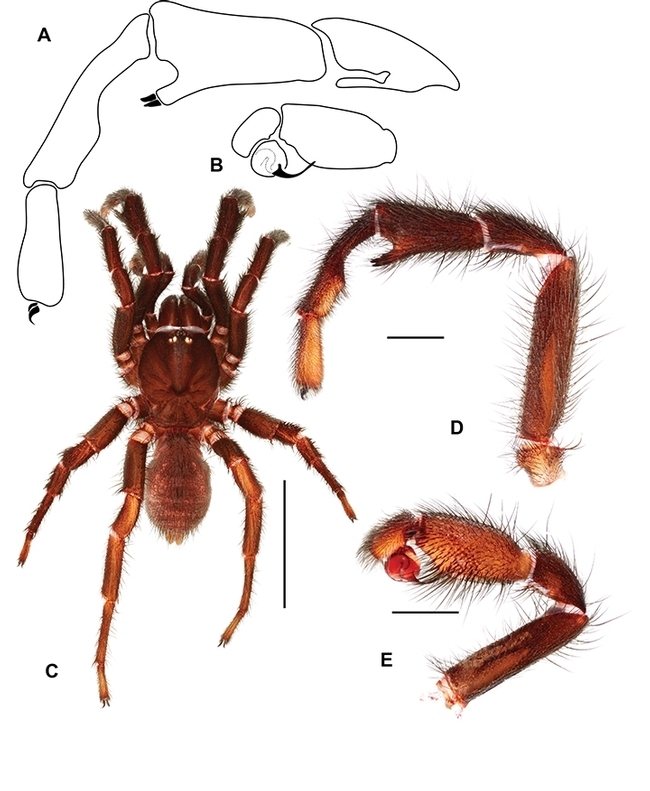


- Author: Kathy Keatley Garvey
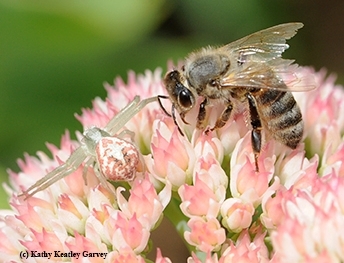
We've seen them ambushing prey, eating prey and looking for more prey.
They're members of the Thomisidae family of spiders. They can move sideways and backwards.
And they excel at camouflage.
Spiders consume 400-800 million tons of prey, mostly insects, each year, according to Professor Jason Bond, a noted spider authority and the Evert and Marion Schlinger Endowed Chair in Insect Systematics, UC Davis Department of Entomology and Nematology.
In comparison, humans consume somewhere around 400 million tons of meat and fish each year, Bond says.
And although "nearly all 47,000-plus spider species have venom used to kill their insect prey, very few actually have venom that is harmful to humans," Bond points out.
How many crab spiders have you seen nailing a pest? Or just hanging out on flowers, such as zinnias? They're there.
Just waiting...
They excel at waiting, too.
